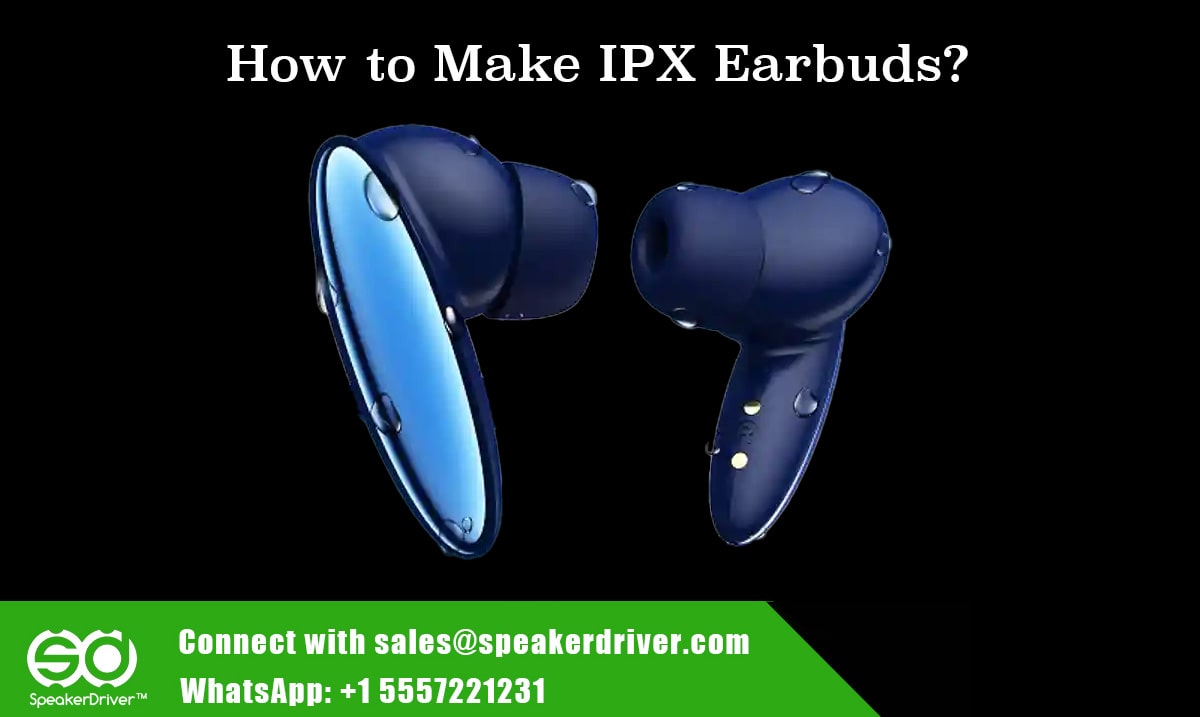How to Make IPX Earbuds
Designing and manufacturing IPX-rated earbuds involves careful material selection, precise sealing techniques, and thoughtful engineering. IPX (Ingress Protection) ratings define how resistant a device is to dust and water, making it essential for durable and outdoor-friendly earbuds.
Understanding IPX Ratings
- IPX0 – No water protection.
- IPX4 – Resistant to splashes from any direction.
- IPX5 – Can resist water jets projected by a nozzle.
- IPX7 – Can survive immersion in water up to 1 meter for 30 minutes.
- IPX8 – Protected against continuous immersion beyond 1 meter (manufacturer-specific depth and duration).
Manufacturing Design Strategies for IPX Earbuds
- Sealed Enclosure Design – Create a housing design with minimal seams and use ultrasonic welding to seal joints tightly.
- Rubber Gasket Integration – Use silicone rubber gaskets or O-rings around charging ports and buttons to prevent water ingress.
- PCB Conformal Coating – Apply a hydrophobic coating to the internal PCB (Printed Circuit Board) to protect against moisture and condensation.
- Acoustic Mesh Covers – Use waterproof acoustic mesh over speaker vents to allow sound to pass while blocking water.
- Elimination of External Buttons – Replace physical buttons with touch sensors to reduce points of water entry.
Materials Used in IPX Earbud Construction
- Silicone – Commonly used for seals, gaskets, and ear tips due to its flexibility and waterproof properties.
- Polycarbonate (PC) – High-strength plastic used for the outer shell to provide durability and moisture resistance.
- Thermoplastic Polyurethane (TPU) – Offers shock resistance and waterproofing in flexible parts.
- PTFE Mesh – Used over microphone and speaker openings to ensure sound permeability while being hydrophobic.
Technologies Used to Achieve IPX Ratings
- Ultrasonic Welding – Joins plastic components using high-frequency vibrations to create a strong, seamless waterproof seal.
- Nano Coating – Adds a microscopic water-repelling layer to internal and external parts of the earbud.
- Laser Welding – For extremely precise joining in micro-sized parts, often used in premium earbuds.
- MEMS Microphone Integration – These are more resistant to environmental elements compared to traditional microphones.
Comparison of Materials and Techniques by IPX Level
| IPX Rating | Material Used | Sealing Technique |
|---|---|---|
| IPX4 | Silicone + PC | Gasket Seals, Acoustic Mesh |
| IPX5 | TPU + Coated PCB | Ultrasonic Welding, Nano Coating |
| IPX7 | Silicone + PTFE Mesh | Laser Welding, Conformal Coating |
| IPX8 | High-grade TPU + Waterproof Glue | Fully Sealed Enclosure, MEMS Microphones |
Prototyping and Testing for IPX Certification
- Water Chamber Testing – Simulate real-world water exposure conditions to assess resistance.
- Pressure Leak Testing – Ensure that the earbud housing maintains integrity under air or water pressure.
- Environmental Stress Testing – Expose prototypes to temperature cycles, humidity, and drop tests.
For expert IPX-compliant components and acoustic mesh membranes, visit SPEAKER DRIVER™️, your trusted partner in audio innovation and durability.










